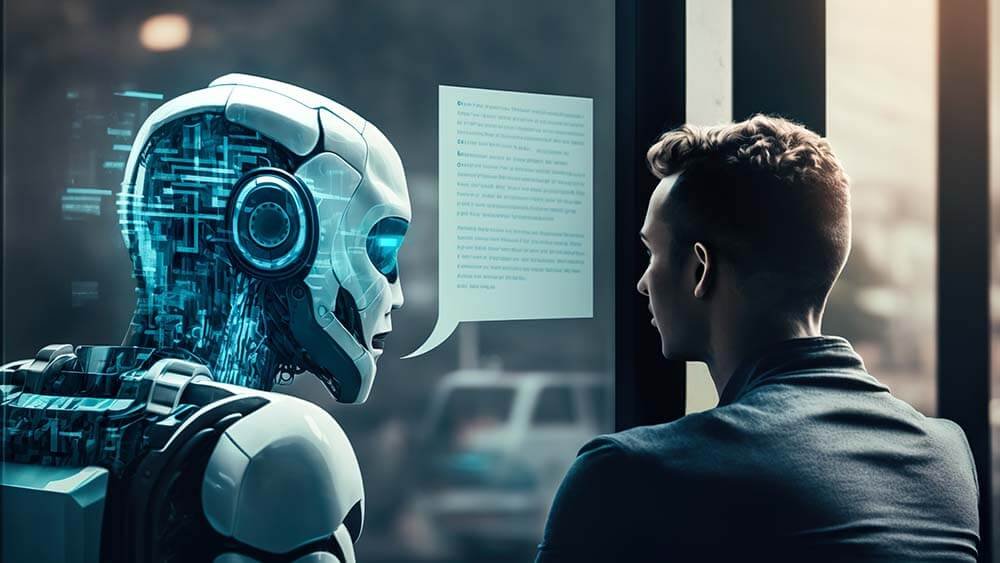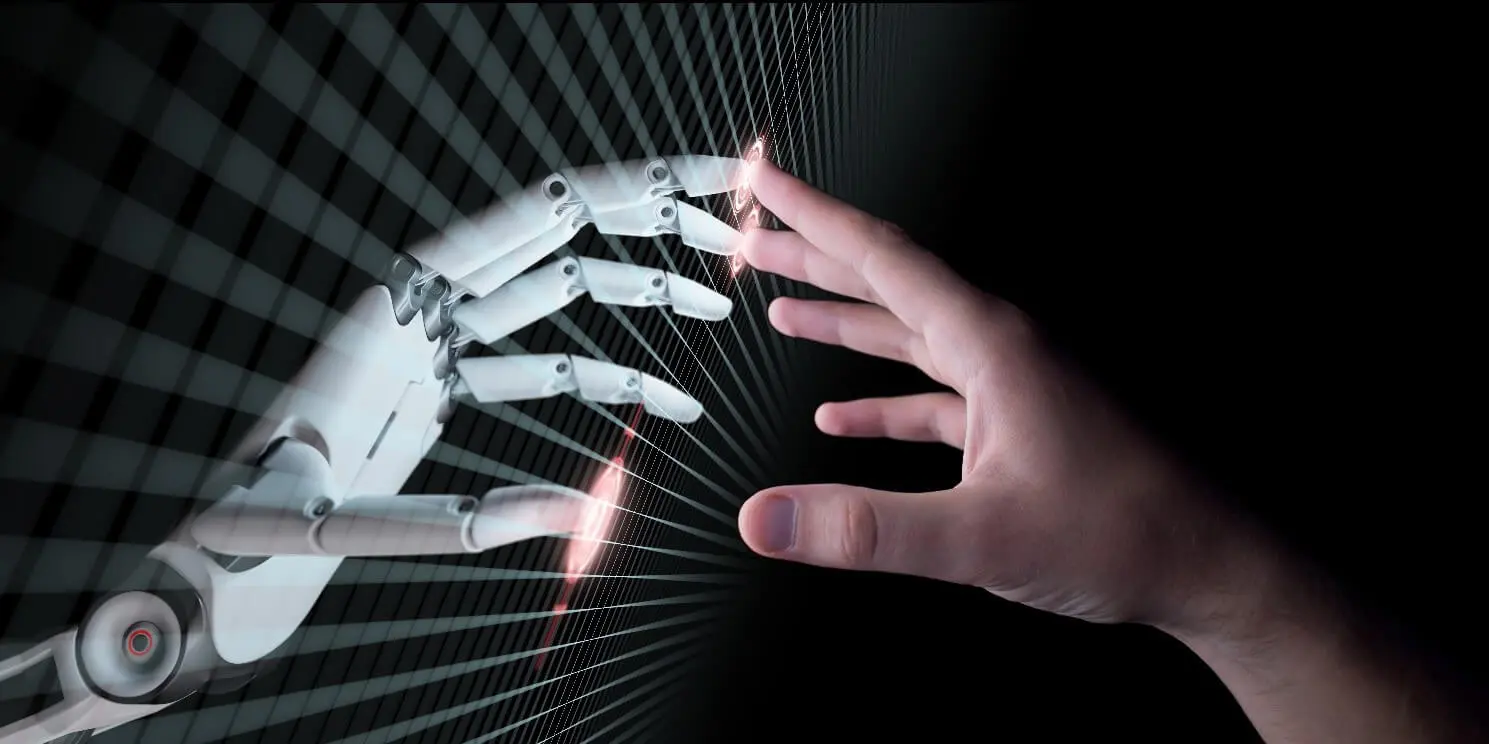This paper brings you into the future, where AI or Human have become one. The steady development of AI technology has lead to discuss about that, how it is going to affect our lives, focusing on the specifics of the working process. Will artificial intelligence eliminate people’s occupations? Do people and machines have to remain friends? Of course, these are the questions and the fascinating future mapped out above.
The Rise of AI: A Brief Overview
An element of history or rather the background to AI is an important area of discussion and development to the present day. Even though AI has been around for quite some time, starting from basic algorithms and progressing to machine learning, it advances rather quickly. Today’s AI technologies are capable of collecting huge amount of information, understanding it, and making correct conclusions. This has created incredible innovations in the fields of health, wealth, mobility, and entertainment among others.
AI vs. Human: The Debate
The increase in the uptake of AI in the society has raised questions over effects on employment of people. On one side the people claim that the AI would replace the human employees and make many employees jobless. On the other hand the supporters pointed out that AI is a net positive for employment and apprenticeship opportunities as it led to the ability for us to do more fulfilling work.
The Case for AI
- Efficiency and Productivity: AI is much faster and precise as compared to human beings in the completion of redundant and monotonous tasks. There is a possibility of raising efficiency to the point where productivity and costs can be reduced for companies.
- Data Analysis: AI benefit from efficient big data processing and this ability helps them analyze patterns which would be unnoticeable to humans. This capability is useful in numerous industries including healthcare where AI can use big data to come up with better diagnosis and treatment programs for patients.
- 24/7 Availability: One major advantage of AI systems is that they do not require rest as a normal human being would require. Specifically, it has a great advantage when the employees are continuously engaging with the customers, as in the customer service and support departments.
- Safety: In such areas as mining or nuclear power stations, it can undertake risky operations thus protecting people on the line.
The Case for Humans
1. Creativity and Innovation: Thus, no matter how amazed we are by the capabilities of AI, the latter is incapable of claiming the actual creative thinking. The human thought process cannot be replaced by AI since it is the main source of invention and imagination in art and confrontation.
2. Emotional Intelligence: Human beings have feelings, and they also feel what others; therefore, they can feel, talk, understand, and relate. This skill is imperative in careers involving social relations like counseling, instruction, and nursing among others.
3. Adaptability: The new situations can be solved with the human intellect and understanding that is not present to the same extent in AI today. This flexibility is crucial in unstable and changeable conditions of a business organization.
4. Ethical Decision-Making: Man is a decision maker who is capable of choosing values and making moral and ethical decisions. Even though AI can recognize programmed rules, it cannot think for itself in ethical issues.

The Future of Work: Collaboration, Not Competition
Work of the future does not have to be an AI versus man scenario. It can be a symbiosis where both work together and the absence of one decreases the effectiveness of the other. Such approach based on the artificial intelligence integration is named as augmented intelligence, which is a concept that presupposes the idea of AI becoming helpers, not replacements, for humans.
Examples of Human-AI Collaboration
- Healthcare: Machines can recognize patterns in medical images and even come up with possible diagnoses, but it is the doctors who arrive at these conclusions, take into consideration a patient’s medical history, and make a prognosis. Such cooperation is useful because it can provide more precise and individual approach to the patients.
- Customer Service: These agents are programmed to take a large number of basic questions, and interact with the clients in real time, thereby saving human performers for the tasks that require higher response to emotions. This, at the same time enhances efficiency and also ensures that there is still some level of interaction with the real person.
- Creative Industries: As for fields like marketing where data needs to be analyzed and consumer pattern must be understood AI can react to the large sum of data input, but it is a human marketer who has to come up with an enticing story for the customer to buy into.
- Manufacturing: Human, thinking hands can at the same time concentrate on supervising the technical process, problem solving, and improvement of product quality and design since thinking fingers can be applying their creativity to a different assignment, such as controlling the performance of robots operating as mechanical hands on an assembly line, carrying out repetitive operations.
Preparing for the Future
AI will continue to become integrated into more areas of life, thus it is important to be ready for what the new developments will bring. The preparation also entails change across individuals and organizations in relation to new shifts and openings.
Lifelong Learning
The flip side is that technological unemployment may dissolve traditional career paths hence one must learn how to adopt continuous learning to education. This is a factually inspired aphorism that means that as the technology advances, its usage should too. Continuing education and training means that the employees are always relevant and competent because of the ever-changing nature of job markets. This might be leveraging on knowledge of technological skills like coding data analysis among others while on the other hand enhancing interpersonal and emotional skills.
Reskilling and Upskilling
Therefore for individuals in industries that are most likely to be affected by automation, reskilling and upskilling is inevitable. Reskilling is the process of acquiring new competencies for a new career path or a new career type, while upskilling concerns the continuous improvement of the competencies and traits required in one’s area of specialization. It means that governments, schools, colleges and universities, companies and employers should make efforts and help workers obtain the resources and opportunities for re- and up-skilling.
Embracing Change
He examined that change is always difficult, yet there are always more prospects for change and creativity. While adopting change we need to listen to new forms of implementation and try to find how we can change our application to incorporate these new technologies. It is by shifting to this kind of thinking that businesses will be able to survive in an environment that includes artificial intelligence.
Ethical Considerations
Thus, it is critical to acknowledge the ethical side of the phenomenon when it comes to the interaction between man and AI in the future of work. It is crucial to ensure that the creation and use of AI technology are done correctly and do not have unfavorable outcomes.
Bias and Fairness:
One of the major challenges of using AI system is that they fine, reinforce the bias that is present in the data set which formed the basis of training the system. There should be algorithms that should not disfavor any group of people and thus it is good to have fair AI. There is the requirement for appropriate training set, which means that training data should be diverse and representative of the population; AI should also be monitored and evaluated constantly.
Privacy and Security:
One of the greatest benefits of AI is its capacity to parse prodigious amounts of data, but along with those powers come the duties to shield people’s privacy and safeguard their data. It poses a lot of pressure on organizations to ensure that data is protected and all the processes adhere to the set ethical standards so that consumers can trust the brands.
Transparency and Accountability:
It is recommended that there is introduction of transparency in computerized systems to enhance the accountability of the systems. This translates to making the way AI arrived at certain decisions comprehensible to humans, and there being relief in case something went wrong.
Conclusion: A Symbiotic Relationship
Everyone will still have a job in the future – or at least that job will be decide by AI. However, it does not need to be a parasitic relationship where one flourishes at the other’s expense but they are partners. If we broach the unison of AI and human intellect, we can develop a better future for humans in terms of efficiency and achievement.
FAQs: Human or AI
1. Will AI completely replace human labor in jobs?
Answer: No artificial intelligence will not only automate some work but also open up new possibilities. AI will probably handle monotonous jobs in the workplace of the future freeing up people to concentrate on creativity, problem solving and social relationships.
2. How can AI and humans collaborate well?
Answer: By utilizing one another’s advantages, humans and AI can work together. Humans concentrate on creativity and intricate decision-making, while AI manages data analysis and monotonous jobs. This collaboration improves results and efficiency.
3. What abilities will be crucial in a future driven by AI?
Answer: Soft skills like creativity emotional intelligence and adaptability as well as technical skills like computing and data analysis will be essential. Remaining current requires ongoing skill improvement and lifelong learning.
4. What moral issues surround the application of AI in the workplace?
Answer: fairness impartiality privacy protection and transparency are all ethical principles. AI systems tuff to be built with data protection impartiality and transparent decision-making procedures in mind.
5. How can people get ready for the changes that AI will bring about?
Answer: people should embrace lifelong learning reskilling and upskilling. Developing soft skills like communication incorporating AI into everyday tasks and remaining receptive to new technologies can all help you adapt to a world driven by AI.

